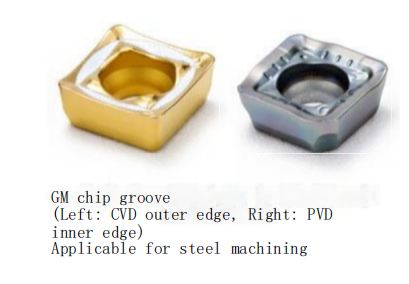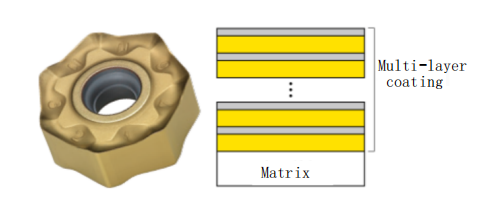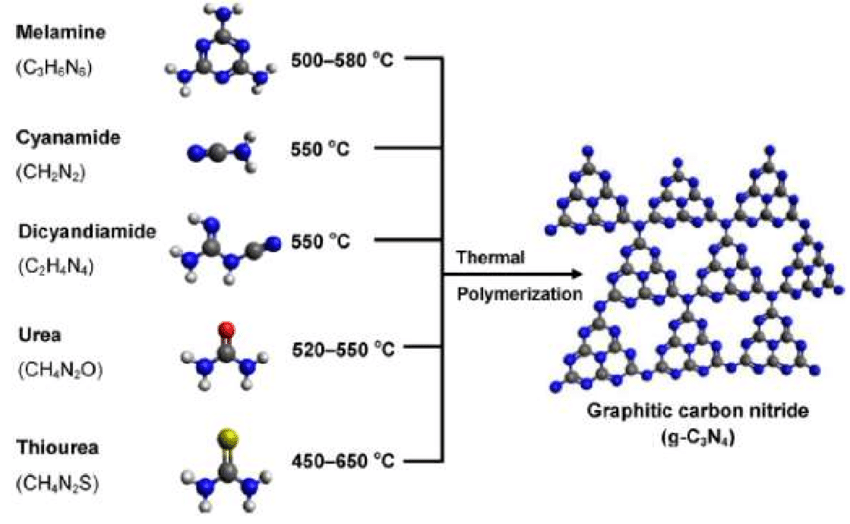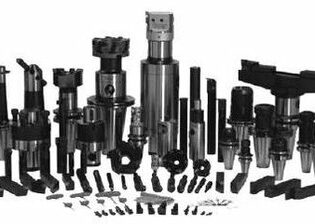Traditional cutting tool coating preparation techniques
Chemical Vapor Deposition (CVD) and Physical Vapor Deposition (PVD) are currently the most widely used preparation methods for cutting tool coatings. Both CVD and PVD are atomic-level surface deposition techniques. These two methods are carried out in a vacuum environment, ensuring a clean and contamination-free preparation process. The quality of coatings produced by CVD and PVD is evidently superior to coatings prepared by most other methods, exhibiting higher performance. Furthermore, these two methods are easily scalable for large-scale production in factory settings.

Development of new cutting tool coating technologies
IBAD coating method
The Ion Beam Assisted thin film Deposition (IBAD) process emerged around 1970. IBAD involves the use of high-energy ions to bombard the surface of a coating during the vapor deposition process, thereby altering the composition and structure of the coating. A notable advantage of the IBAD process is its ability to operate at low temperatures, resulting in tool coatings with properties such as density and high bonding strength.
Laser technology was already being applied to surface treatment of materials around the 1970s. After several decades of rapid development, laser surface treatment techniques can produce thin films on the tool surface. These films can significantly enhance the mechanical and physical properties, as well as wear resistance and fatigue resistance of the cutting tool surface. By utilizing the principles of Rapid Powder Metallurgy (RPM), a method that involves rapid solidification of metal materials through laser melting and layer-by-layer deposition, it is possible to prepare thin films with dense microstructures, uniform surfaces, and excellent performance.
Tool soft coatings
The sol-gel method is used to prepare soft coatings oncarbidecutting tools, allowing the tools to maintain good toughness and excellent strength. Tool soft coatings involve applying one or multiple layers of materials with relatively low hardness but extremely low friction coefficients on the tool surface. Examples of such coating materials include MoS2, WS2, and TaS2 [13]. These soft coating materials not only exhibit low friction coefficients but also possess advantages like high mechanical strength, wear resistance, and good adhesion.
The sol-gel method is typically combined with processes such as chemical vapor deposition (CVD) and flame spraying. However, this method is associated with high production costs and complexity. Therefore, finding a cost-effective and simpler approach is an important development direction for the sol-gel method.
Multicomponent coatings

Depositing additional elements or compounds onto a TiN coating is also one of the current mainstream directions in coating development. Its remarkable characteristics of high-temperature resistance and oxidation resistance have garnered significant attention. The high hardness and high-temperature resistance of TiAlN thin films have found even broader applications with the advancement of advanced processing techniques. Multicomponent coatings like TiAl-Al2O3 now exhibit Vickers hardness up to 4000, surpassing the performance of binary coatings.
TiCN combines the toughness of TiC with the hardness of TiN, making it approximately three times more durable than typical TiN tool coatings. Subsequently, multicomponent coatings like TiZrCN and TiAlCN have been developed. The individual performance of each component within these coatings, as well as their combined performance, clearly exceeds that of single-element coatings or binary coatings.
Gradient coatings
The bond strength between coatings and substrates, as well as between different coating layers, is a critical factor influencing tool performance. The matching and bonding between these components determine the quality ofcarbidecutting tools. Different coating materials possess varying physical properties, which can lead to thermal stress and cracking in the tool due to rapid temperature changes during operation.
Cracks are more likely to form in coatings with higher hardness, and they might even propagate into the substrate. As shown in Figures 6 and 7, gradient coating technology in tools can effectively alleviate stress concentration at the coating-interface and coating-substrate interfaces. This significantly enhances the bond strength between these components and extends the lifespan ofcarbidecutting tools.
Carbon Nitride (C3N4) coatings

Following the emergence of diamond and boron nitride coatings, a new type of coating has appeared in recent years: carbon nitride (C3N4) coating. American physicists A.M. Liu and M.L. Cohen predicted that β-C3N4 (carbon nitride) could exhibit hardness comparable to that of diamond. As no new covalent compound had been found in nature, they designed a novel superhard inorganic compound: carbon nitride. Wuhan University utilized direct current (dc) reactive magnetron sputtering to produce C3N4 coatings on cutting tools. These coatings exhibit similar or even superior properties to diamond coatings.
C3N4 coatings possess good thermal stability and can be used for metal cutting operations, showing promising application prospects. Currently, the main methods for preparing C3N4 coatings are physical vapor deposition techniques, including reactive sputtering, ion beam-assisted deposition (IBAD), ion implantation, pulse laser deposition, as well as chemical deposition methods like hot filament chemical vapor deposition (HFCVD) and microwave plasma-enhanced chemical vapor deposition (MPCVD).
Çözüm
As highly utilized cutting tools, durability is always a critical concern forcarbidetools. Coating materials for cutting tools can significantly enhance their lifespan, addressing the challenge of balancing hardness and strength incarbidetool coatings. However, with the constant evolution of materials, higher demands are placed on tool performance. As scientific and technological advancements continue, new directions and technologies are poised to bring a significant revolution to tool coatings. In modern machining, materials-based tools are gaining widespread recognition and application, driven by substantial market demand.
1The immense demand is driving the development of diversified, multi-layered, gradient, and superhard coatings forcarbidecutting tools.
2Additionally, the future focuses on tool coatings with low friction coefficients, inherent lubricating properties, and a balanced combination of toughness and hardness, which pose as crucial research topics.
3The trend towards increased flexibility in the processing ofcarbidetool coatings is evident. This includes processes like deep cryogenic treatment, magnetization treatment, and heat treatment for coated tools.









